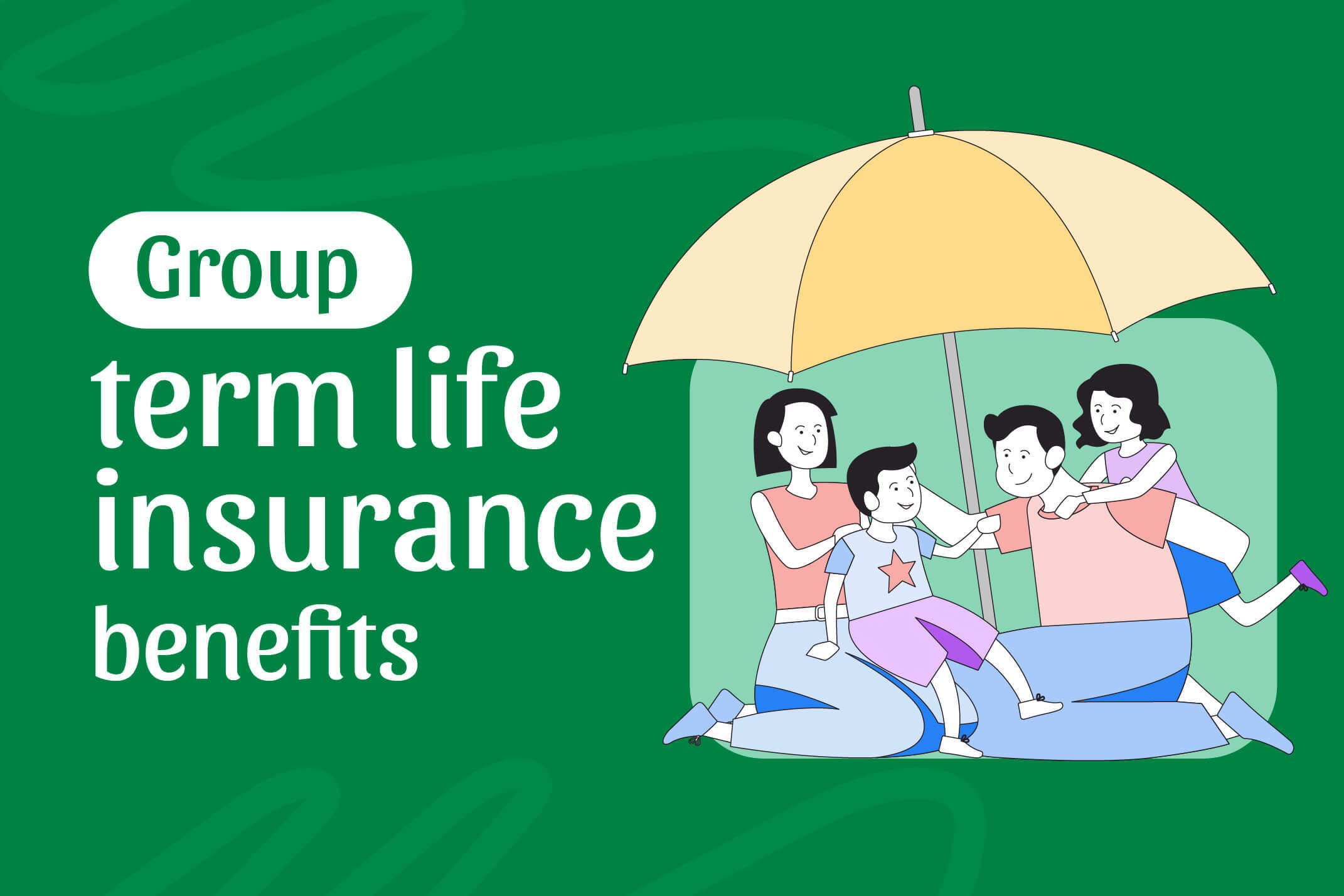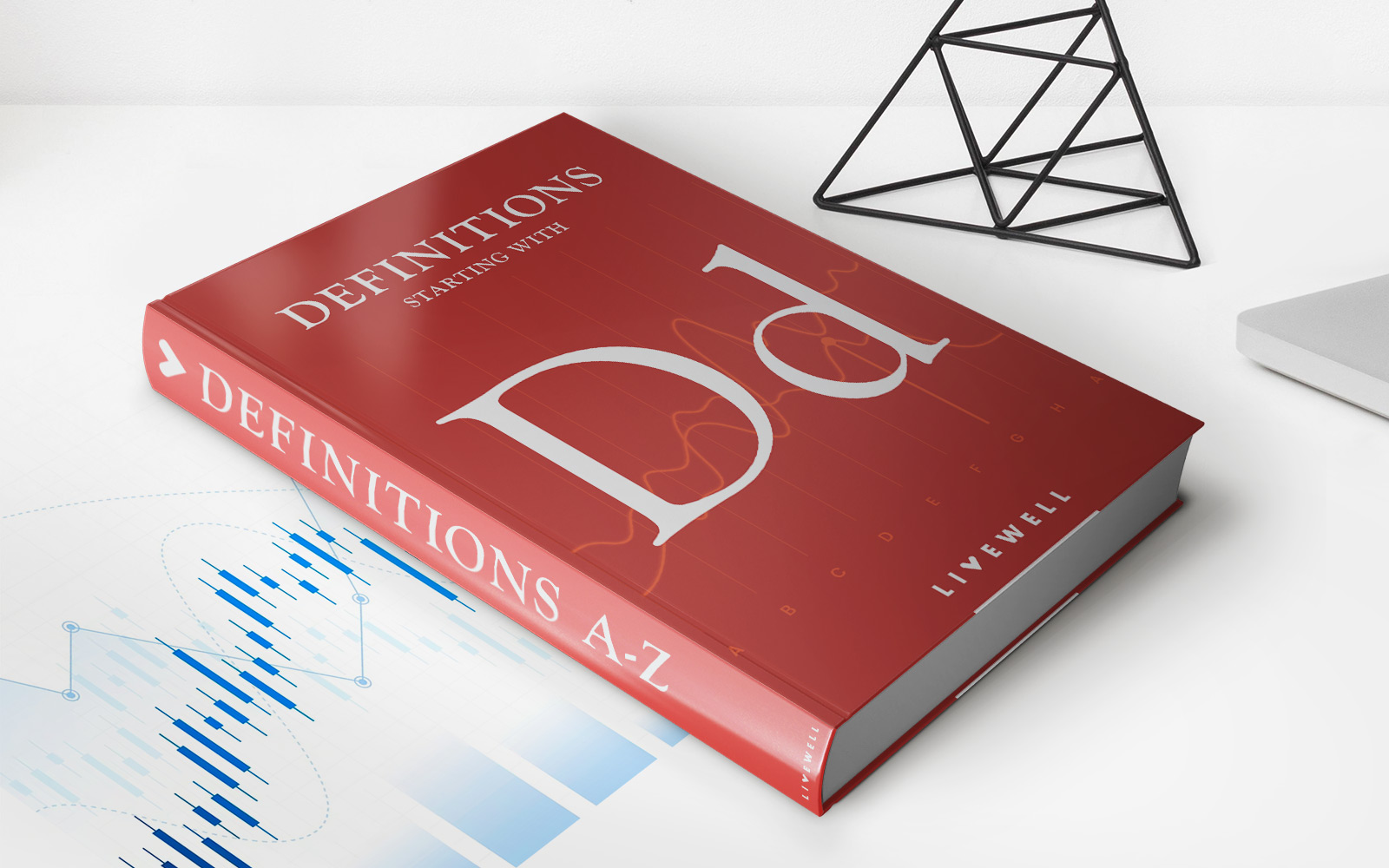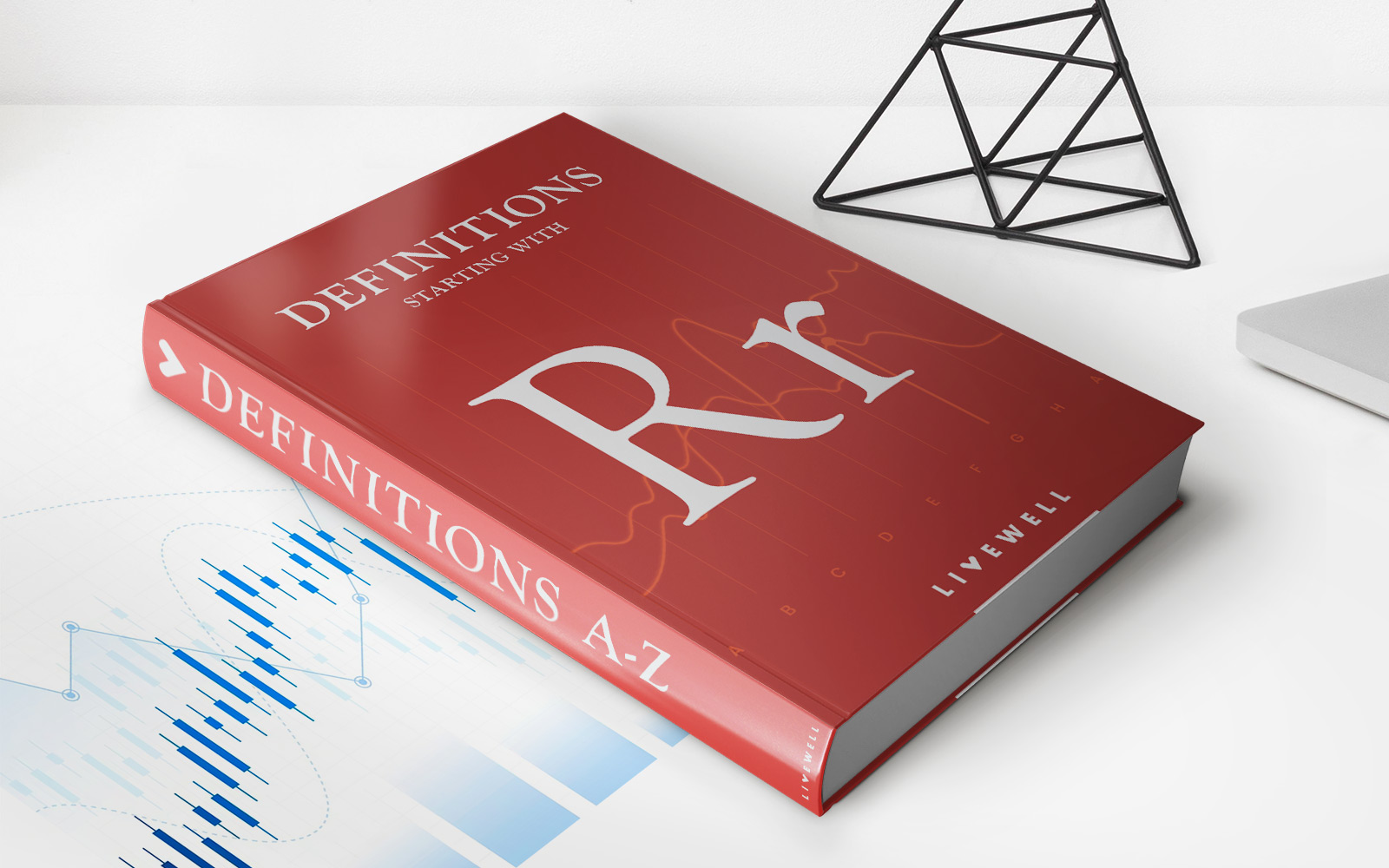Home>Finance>What Happens If I Live Past My Term Life Insurance?


Finance
What Happens If I Live Past My Term Life Insurance?
Modified: February 21, 2024
Discover what happens if you outlive your term life insurance policy and learn about the financial implications. Plan your future with smart finance decisions.
(Many of the links in this article redirect to a specific reviewed product. Your purchase of these products through affiliate links helps to generate commission for LiveWell, at no extra cost. Learn more)
Table of Contents
Introduction
Welcome to the world of life insurance! In this article, we will be exploring what happens if you outlive your term life insurance policy. While it may seem like a distant concern, understanding the potential outcomes can provide peace of mind and help you make informed decisions about your financial future.
Term life insurance is a popular choice for individuals looking to protect their loved ones financially in the event of their death. It offers coverage for a specific period, known as the term, which can range from 10 to 30 years. During this time, if the policyholder passes away, the beneficiaries named in the policy receive a death benefit payout.
However, what if you reach the end of the term and are still alive? Fortunately, there are several options available to you. In this article, we will explore these alternatives and help you navigate the post-term life insurance landscape.
It’s important to note that the specific details and options may vary depending on your insurance provider and policy terms. Therefore, it’s always advisable to consult with a qualified insurance professional for personalized advice.
So, let’s dive in and explore what happens if you live past your term life insurance!
What is Term Life Insurance?
Term life insurance is a type of life insurance that provides coverage for a specific duration, or term, which is usually anywhere from 10 to 30 years. It is designed to provide financial protection to your loved ones in the event of your death during the specified term.
Unlike permanent life insurance, such as whole or universal life insurance, which provides coverage for a lifetime, term life insurance is temporary and does not accumulate cash value. It is a straightforward and affordable option for individuals who want to ensure their family’s financial security in the event of their untimely demise.
Term life insurance policies offer a death benefit, which is the amount of money that is paid out to the beneficiaries listed in the policy if the insured person passes away during the term. The death benefit can be used by your loved ones to cover funeral expenses, pay off debts, replace lost income, or meet any other financial obligations they may have.
The premiums for term life insurance are typically lower than those of permanent life insurance policies because term insurance does not have the added component of cash value accumulation. This means that you are only paying for the cost of the insurance coverage for the specified term.
Term life insurance is a popular choice for individuals who have specific financial obligations that may eventually expire, such as a mortgage or college tuition fees. It provides a means to ensure that these obligations are taken care of in the event of their death during the term.
It’s important to note that term life insurance coverage ceases once the term ends. At this point, you may no longer have the financial protection offered by the policy. However, there are options available to address this scenario and provide continued coverage or other alternatives, which we will explore in the following sections.
Coverage Duration
The coverage duration of a term life insurance policy is one of the key considerations when selecting a policy. It determines the length of time for which you will have life insurance protection.
Term life insurance policies typically offer coverage durations ranging from 10 to 30 years, although some insurers may offer shorter or longer terms. The duration you choose should align with your specific needs and financial goals.
When determining the coverage duration, it’s important to consider various factors such as the financial responsibilities you want the insurance to cover, your age, and your income-earning potential. For example, if you have young children who will be dependent on your income for several years, a longer-term policy may be appropriate to ensure their financial well-being until they become financially independent.
Alternatively, if you have already paid off your mortgage and your children have grown up and become financially independent, a shorter-term policy may be sufficient to cover any remaining financial obligations or provide a safety net for unexpected expenses.
It’s important to carefully evaluate your current and future financial needs to select a coverage duration that aligns with your goals. Keep in mind that longer-term policies generally have higher premiums, while shorter-term policies offer more affordable options but may require you to secure a new policy at the end of the term if you still want coverage.
Additionally, it’s worth noting that some life insurance policies offer the flexibility to convert from a term policy to a permanent policy, which can extend the coverage for a lifetime. This convertible option allows you to maintain coverage beyond the initial term without the need to undergo a new medical examination or prove insurability. We will explore this option in more detail in the next section.
In summary, the coverage duration of a term life insurance policy should be chosen based on your specific financial obligations, age, income-earning potential, and future needs. Careful consideration of these factors will help ensure that you have appropriate coverage for the desired period, providing financial protection to your loved ones in the event of your untimely death.
What Happens When the Term Expires?
When the term of your term life insurance policy reaches its expiration, a few scenarios may occur depending on the options you have chosen and the terms of your policy.
Option 1: Coverage Ends – In the simplest case, once the term expires, the coverage provided by your term life insurance policy comes to an end. This means that if you pass away after the term has expired, there will be no death benefit paid out to your beneficiaries. It’s important to be aware of this and plan accordingly to ensure your loved ones are financially protected beyond the term of your policy.
Option 2: Convertible Option – Many term life insurance policies offer a convertible option, which allows you to convert your policy into a permanent life insurance policy without the need for a medical examination or proving insurability. This can be a valuable option if you want to extend your coverage without the risk of being denied coverage due to changes in your health. The terms and conditions for conversion may vary, so it’s important to review your policy or consult with your insurance provider for specific details.
Option 3: Renewal or Extension – Some insurance providers offer the option to renew or extend your term life insurance policy at the end of the initial term. This allows you to continue the coverage for an additional term. However, it’s important to note that the premiums for a renewed or extended policy may be higher than what you were paying during the initial term. It’s advisable to carefully assess your current needs and compare the costs and benefits of renewing or extending the policy versus exploring other insurance options.
Option 4: Supplement with Permanent Life Insurance – Another possibility is to supplement your term life insurance coverage with a permanent life insurance policy. Permanent life insurance provides coverage for a lifetime and also has additional features such as cash value accumulation, potential dividend earnings, and the option to borrow against the policy. By adding a permanent life insurance policy, you can ensure that you have coverage for your entire life and potentially build cash value that can be used for various purposes such as retirement planning or funding educational expenses.
It’s important to note that the available options and their specific terms may vary depending on the insurance provider and the policy you have. It’s recommended to review your policy documents, consult with your insurance professional, and assess your current and future needs to make an informed decision about the best course of action when your term life insurance policy expires.
Ultimately, understanding what happens when the term of your term life insurance policy expires allows you to plan ahead and make informed decisions to ensure the continued financial protection of your loved ones.
Convertible Options
One of the key advantages of some term life insurance policies is the availability of a convertible option. This feature allows policyholders to convert their term policy into a permanent life insurance policy without the need for a medical examination or proving insurability. Convertible options provide an opportunity to extend your coverage beyond the initial term and provide lifelong protection.
The process of converting a term policy into a permanent policy is relatively straightforward. Typically, the policyholder can exercise the conversion option within a specified timeframe, usually before a certain age or a predetermined number of years into the term. The exact details and limitations will depend on the specific policy and insurance provider.
When you choose to convert your term policy, you essentially switch from temporary coverage with no cash value accumulation to a permanent policy that offers coverage for the rest of your life along with potential cash value growth. The converted policy may be a whole life insurance policy, which offers a guaranteed death benefit and cash value accumulation, or a universal life insurance policy, which provides flexible premiums and the opportunity to adjust the death benefit and cash value.
The ability to convert a term policy can be invaluable in certain situations. For example, if you develop health conditions during the term that may make it challenging to secure affordable coverage in the future, converting your policy can ensure continued coverage without worrying about your insurability. Additionally, if you anticipate a need for coverage beyond the initial term, such as ongoing financial responsibilities or legacy planning, converting to a permanent policy can be a strategic move.
It’s important to note that converting your term policy usually involves higher premiums compared to the initial term coverage. This is because permanent life insurance policies tend to have a higher cost due to the guaranteed death benefit and cash value component. However, the premiums will remain level throughout the duration of the converted policy, providing stability and predictability compared to term policies where premiums may increase at renewal.
When considering the conversion option, it’s essential to thoroughly review the terms and conditions of your policy. Pay attention to any conversion deadlines, restrictions on the type of policy you can convert to, and how the new premiums will be calculated. Consulting with a qualified insurance professional can help you understand the implications of converting your policy and assist in determining if it aligns with your long-term financial goals.
In summary, convertible options in term life insurance policies provide policyholders with the flexibility to convert their temporary coverage into a permanent policy, offering lifelong protection and potential cash value growth. By understanding and evaluating these options, you can make informed decisions about the best course of action to ensure your continued financial security.
Renewing or Extending your Coverage
If you find yourself at the end of your term life insurance policy and still in need of coverage, you may have the option to renew or extend your policy. This allows you to continue your life insurance coverage beyond the initial term, providing ongoing financial protection for your loved ones.
Renewing or extending your coverage involves entering into a new agreement with your insurance provider. The specific terms and conditions for renewal or extension will vary depending on your policy and insurer. It’s important to review your policy documents or consult with your insurance professional to understand the available options and their implications.
Renewal: Some term life insurance policies offer the option to renew the policy at the end of the initial term. This typically involves signing a new contract with updated terms. During the renewal process, your premiums may change based on various factors, including your age, health status, and the prevailing market rates for life insurance. It’s important to note that the renewed premiums may be higher than what you were paying during the initial term.
Extension: In some cases, your term life insurance policy may allow for an extension of the coverage beyond the initial term without the need for a new contract. This option is usually available on a year-to-year basis, giving you the flexibility to continue the coverage until a specified age or for a predetermined number of years. The premiums for the extended coverage may increase annually, so it’s essential to evaluate the affordability and long-term sustainability of the policy.
Renewing or extending your coverage can be a viable option if you still have financial obligations or dependents to protect and want to maintain the continuity of your life insurance coverage. However, there are a few important considerations to keep in mind:
1. Premium Increases: Renewing or extending your coverage will likely result in higher premiums compared to what you were paying during the initial term. It’s important to factor in these increased costs when evaluating the affordability of the policy.
2. Underwriting: While some policies may renew or extend without requiring additional underwriting, others may require you to provide updated health information or undergo a medical examination. The insurer may use this information to determine the new premium rates or assess your insurability for the extended coverage.
3. Coverage Limitations: When renewing or extending your coverage, it’s essential to review the terms and conditions of the new policy. Ensure that the coverage amount and any additional features or riders meet your current needs. Consider if there are any limitations or exclusions that may impact the scope of coverage.
4. Exploring Alternative Options: Before making a decision to renew or extend your coverage, it’s worth evaluating other life insurance options. This could include exploring permanent life insurance policies or supplementing your existing coverage with additional policies to provide the desired level of financial protection.
Ultimately, the decision to renew or extend your term life insurance coverage should be based on a careful assessment of your current and future needs, financial goals, and budget. Consulting with a qualified insurance professional can provide valuable guidance in navigating the renewal or extension process and exploring alternative coverage options to ensure the continued financial security of your loved ones.
Supplementing with Permanent Life Insurance
Supplementing your term life insurance coverage with a permanent life insurance policy can offer an additional layer of financial protection and provide lifelong coverage for you and your loved ones. Permanent life insurance is a type of life insurance that offers coverage for the entirety of your life, as long as the premiums are paid.
While term life insurance serves a specific duration, such as 10, 20, or 30 years, permanent life insurance provides coverage indefinitely. It offers a death benefit that is paid out to your beneficiaries upon your passing, along with the potential to accumulate cash value over time.
There are several benefits to supplementing your term life insurance with a permanent policy:
1. Lifelong Coverage: Permanent life insurance ensures that your loved ones will receive a death benefit regardless of when you pass away. This can be especially important if you have dependents who will continue to rely on your financial support even after the term of your term life insurance policy expires.
2. Cash Value Accumulation: Permanent life insurance policies have a cash value component that grows over time. This means that a portion of your premium payments goes towards building cash value that you can access during your lifetime. This cash value can be utilized for various purposes, such as supplementing retirement income, funding a child’s education, or covering unexpected financial needs.
3. Flexibility: Permanent life insurance policies often offer flexibility in terms of premium payments. You may have the option to pay premiums for a set number of years or pay premiums continuously. Additionally, some policies allow you to adjust the death benefit or even borrow against the cash value of the policy if needed.
4. Potential Dividend Earnings: Certain types of permanent life insurance policies, such as participating whole life insurance, may pay out dividends to policyholders. These dividends can be used to increase the death benefit, accumulate additional cash value, or be received as a cash payment.
When supplementing your term life insurance with a permanent policy, it’s important to carefully consider your specific needs, financial goals, and budget. You should assess the amount of coverage required, the desired level of cash value accumulation, and any additional features or riders that may be beneficial.
It’s advisable to consult with a qualified insurance professional who can evaluate your current coverage, financial situation, and help you choose the most suitable permanent life insurance policy to supplement your term coverage. They can also assist in comparing quotes and reviewing the terms and conditions of different policies to ensure that your financial goals are met.
By supplementing your term life insurance with a permanent policy, you can provide lifelong financial protection for your loved ones and enjoy the added benefits of cash value accumulation and flexibility that permanent life insurance offers.
Cash Value or Return of Premium Policies
When considering life insurance options, you may come across two types of policies: cash value policies and return of premium (ROP) policies. These policies offer additional features that can be appealing to certain individuals seeking both protection and potential financial benefits.
1. Cash Value Policies: Cash value life insurance, such as whole life or universal life insurance, includes a cash accumulation component in addition to the death benefit. A portion of the premiums paid goes towards building cash value, which grows over time on a tax-deferred basis. The policyholder can access this cash value through withdrawals or policy loans during their lifetime. The cash value can be used for various purposes, such as supplementing retirement income, funding education expenses, or handling emergencies.
2. Return of Premium Policies (ROP): ROP policies are a variation of term life insurance that offers a return of premiums if the insured individual outlives the term of the policy. Unlike traditional term policies, where premiums are typically not refunded if the insured survives the term, ROP policies provide a refund of the premiums paid at the end of the policy term, assuming the individual has not made a claim.
While both cash value and ROP policies offer additional benefits, they should be evaluated carefully based on your specific needs and financial goals:
– Long-Term Planning: Cash value policies can provide a long-term savings component alongside life insurance coverage. If you have a need for lifelong coverage and the desire to build cash value over time, a cash value policy may be suitable. ROP policies, on the other hand, may appeal to individuals who want life insurance coverage for a specific term with the potential to recoup their premium payments if they outlive the policy.
– Premium Payments: Cash value policies generally have higher premiums compared to traditional term policies. This is due to the added cash value component and the lifelong coverage they provide. ROP policies typically have higher premiums compared to standard term policies as well because of the guaranteed return of premiums if the policyholder survives the term.
– Financial Goals: If your primary goal is to protect your loved ones financially in the event of your death, a traditional term life insurance policy may be the most cost-effective option. However, if you also want to accumulate cash value or have the potential for a premium refund, cash value or ROP policies may better align with your financial objectives.
When considering cash value or ROP policies, it’s crucial to carefully review the terms, conditions, and costs associated with each option. Consult with a qualified insurance professional who can provide guidance tailored to your specific needs and help you make an informed decision.
In summary, cash value and ROP policies offer additional benefits and features compared to traditional term life insurance. These policies can provide lifelong coverage, build cash value, and potentially offer a return of premium payments. Understanding your financial goals and conducting thorough research will help you determine whether these types of policies are the right fit for your unique circumstances.
Important Considerations
When it comes to life insurance, there are some important considerations to keep in mind to ensure you make the right decisions for you and your loved ones. Here are a few key factors to consider:
1. Coverage Needs: Assess your current and future financial obligations, such as mortgage payments, outstanding debts, education expenses, and income replacement for your dependents. The coverage amount should provide adequate financial protection for your loved ones in the event of your passing.
2. Budget: Determine how much you can comfortably afford to allocate towards life insurance premiums. Be realistic about what fits within your budget to ensure that you can consistently make the required payments to keep your coverage active.
3. Policy Terms: Understand the specific terms and conditions of the life insurance policy, including the coverage duration, premium payment schedule, renewal or conversion options, and any limitations or exclusions. Be aware of any potential changes to premiums over time and how they might impact your budget.
4. Convertibility: If you opt for a term life insurance policy, check if it offers a convertible option. This can be valuable later on if you want to extend your coverage or switch to a permanent policy without the need for additional underwriting or proving insurability.
5. Health and Insurability: Depending on the type of policy or conversion option, your health and insurability may play a role in the premium rates or eligibility. It’s important to disclose accurate information about your health and lifestyle during the application process to ensure you have the appropriate coverage.
6. Insurance Provider: Research and review the reputation, financial stability, and customer service of different insurance providers. Look for a company with a strong track record and positive customer reviews, as they will be responsible for paying out the death benefit to your beneficiaries when the time comes.
7. Seek Professional Advice: Consult with a qualified insurance professional who can assess your specific needs, answer your questions, and help you navigate the complex world of life insurance. They can provide personalized recommendations based on your circumstances and guide you towards the most suitable policy for your needs.
8. Regular Review: Life circumstances change over time, so it’s important to regularly review your life insurance coverage to ensure it still aligns with your needs. Consider conducting an annual review or reassessment to make any necessary adjustments to your coverage, such as increasing or decreasing the coverage amount or exploring additional policies to supplement your existing coverage.
Remember, life insurance is a tool to provide financial protection and peace of mind for your loved ones. Take the time to understand the various options available, consider your specific needs and circumstances, and seek expert guidance to make informed decisions that safeguard your family’s financial future.
Conclusion
Term life insurance provides vital financial protection for your loved ones in the event of your untimely death. While it is designed to offer coverage for a specific duration, what happens when the term expires is a crucial consideration.
Understanding the options available to you when your term life insurance policy ends can help you make informed decisions. You may have the choice to convert your policy to a permanent life insurance policy, renew or extend your coverage, or supplement with additional policies. Each option comes with its own benefits and considerations, and it’s important to assess your specific needs and financial goals before making a decision.
Convertible options allow you to seamlessly transition from a term policy to a permanent policy without the need for further underwriting. This can provide lifelong coverage and potential cash value accumulation.
Renewing or extending your coverage allows you to continue your term life insurance for an additional period. It’s important to evaluate affordability and the long-term sustainability of the policy, as premiums may increase at renewal.
Supplementing your term life insurance with a permanent life insurance policy offers lifelong coverage and the potential for cash value growth. This can be beneficial for individuals with ongoing financial obligations or those seeking lifelong financial protection.
Other considerations, such as cash value or return of premium policies, can provide additional features and benefits that align with specific goals and preferences. Understanding the nuances of these policies and evaluating how they fit into your overall financial plan is crucial.
In conclusion, life insurance is a critical tool for protecting your loved ones and providing financial security. Understanding what happens when your term life insurance policy ends allows you to plan ahead, review your options, and make informed decisions regarding your future coverage needs. Consulting with a knowledgeable insurance professional can provide valuable guidance throughout the process and ensure that you have the right protection in place for your circumstances.
Remember, life insurance is not a one-size-fits-all solution, and it’s important to regularly review and reassess your coverage to ensure it continues to meet your evolving financial needs. By doing so, you can rest assured knowing that your loved ones will be well taken care of in the face of life’s uncertainties.














